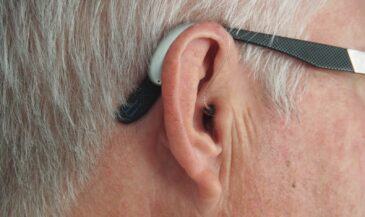By Dr. Christopher Kent
Innate intelligence is a pivotal chiropractic concept. Yet, it is often poorly understood. I’d like to briefly review the classic definition of innate intelligence, and examine its role in contemporary scientific thought.
Stephenson (1) defined the term in his “Chiropractic Textbook” while describing the 33 principles of chiropractic:
“No. 20. A ‘living thing’ has an inborn intelligence within its body, called Innate Intelligence…
No. 23. The function of Innate Intelligence is to adapt universal forces and matter for use in the body, so that all parts of the body will have co-ordinated action for mutual benefit.”
“Webster’s” (2) defines “innate” as “1. existing in one from birth; inborn; native. 2. inherent in the character of something. 3. originating in or arising from the intellect or the constitution of the mind, rather than learned from experience.”
“Dorland’s” (3) defines “intelligence” as “the ability to comprehend or understand.”
Stephenson (1) acknowledged the distinction between innate intelligence and that “learned from experience” when describing “educated mind,” associated with “reasoning, will, memory, etc.”
Although I find the existence of inborn vs. learned biological activities to be self-evident, others have criticized the concept of innate intelligence.
Donahue (4) acknowledges that “Possibly as many as 80 percent of chiropractors subscribe to some version of it,” although he contends, “it is usually concluded that since the concept of II (innate intelligence) is untestable, even indirectly, it must be abandoned.” Donahue considers the concept of innate intelligence to be an impediment to philosophy for chiropractic, and encourages the profession to dismiss it. (5)
Is the term “innate” in the context of inborn biological activity unscientific? Can it be investigated? A search of journals indexed by the National Library of Medicine in the MEDLINE database revealed 1,017 citations in the last two years where the term “innate” appeared in the fields searched. A few examples will demonstrate that the chiropractic concept of “innate intelligence” is not incompatible with contemporary scientific thought.
Hikosaka (6) of the Juntendo University School of Medicine in Tokyo, differentiates between innate and learned actions in neural networks: “Action is the means by which we and animals survive. It consists of a complex combination of movements, which are either innately empowered or acquired by learning. In this article, I propose a hypothesis on the organization of action and the organization of the brain. Innate and learned actions are controlled by different levels of neural networks: innate actions are controlled by reflex mechanisms and pattern generators in the spinal cord and brainstem, while learned actions are controlled by the cerebral cortex, basal ganglion, and cerebellum. However, these mechanisms are by no means independent.”
Wickelgren (7) of Columbia University writes: “Ideas are represented in the cerebral cortex by webs (innate cell assemblies), using sparse coding with sparse, all-or-none, innate linking. Recruiting a web to represent a new idea is called chunking. The innate links that bind the neurons of a web are basal dendritic synapses. Learning modifies the apical dendritic synapses that associate neurons in one web to neurons in another web.”
The association of nerve system function with immune system activity was discussed by Schwartz et al. (8) These investigators reported, “The innate immune system, represented by activated macrophages, can facilitate the processes of regeneration in the severed spinal cord.”
Other discussions of innate immunity in modern scientific publications address the amazing capabilities of the human body. Cousens and Wing (9) report, “Innate immunity contributes to blood clearance and eventual sterilization of the liver subsequent to Listeria infections.”
Woods et al (10) state that “Cells of the innate immune system (i.e. macrophage, natural killer cell, and polymorphonuclear neutrophils) are first-line defenders against cancer and infectious disease…”
There are many other examples that could be cited to support the case for proudly embracing our philosophical heritage and the concept of innate intelligence.
The scientific community is in sync with the popular culture. The world stands ready. The paradigm shift has already occurred. We, as chiropractors, are all that stands in the way of assuming our rightful role as the leaders of the reform movement in health care and human potential. Will we accept that role with dignity and courage?
References
1. Stephenson RW: “Chiropractic Textbook.” The Palmer School of Chiropractic. Davenport, IA. 1948.
2. Webster’s “New Universal Unabridged Dictionary.” Barnes and Noble. New York. 1996.
3. Dorland’s “Illustrated Medical Dictionary.” W.B. Saunders. Philadelphia, PA. 2000.
4. Donahue J: “The trouble with innate and the trouble that causes.” 1992.
5. Donahue J: “Dis-ease in our principles. The case against innate intelligence.” American Journal of Chiropractic Medicine 1988;1(2):86.
6. Hikosaka O: “Neural systems for control of voluntary action-a hypothesis.” Adv Biophys 1998;35:81.
7. Wickelgren WA: “Webs, cell assemblies, and chunking in neural nets: Introduction.” Can J Exp Psychol 1999;53(1):118.
8. Schwartz M, Moalem G, Leibowitz AR, Cohen IR: “Innate and adaptive Immune responses can be beneficial for CNS repair.” Trends Neurosci 1999;22(7):295.
9. Cousens LP, Wing EJ: “Innate defenses in the liver during Listeria infection.” Immunol Rev 2000;174:150.
10. Woods JA, Davis JM, Smith JA, Nieman DC: “Exercise and cellular innate immune function.” Med Sci Sports Exerc 1999;31(1):57.






























































































































































